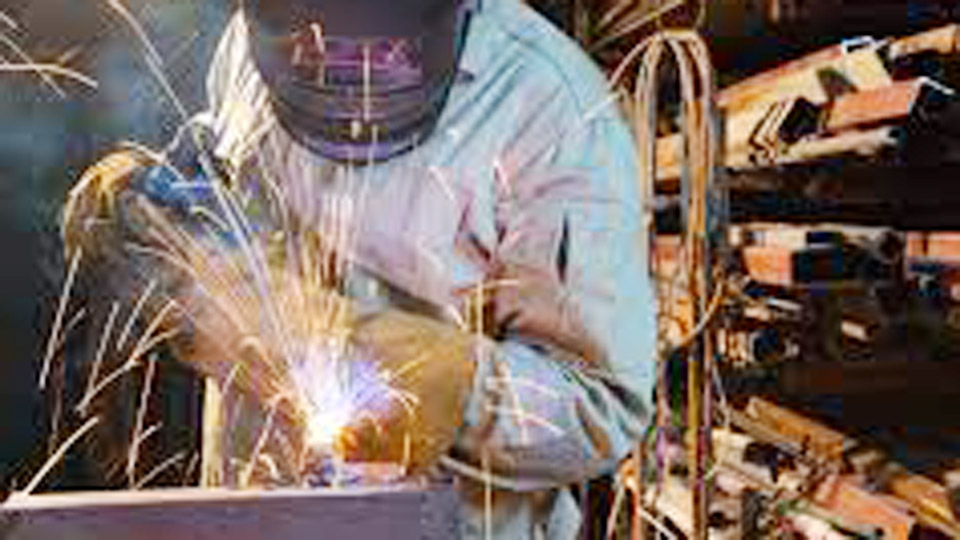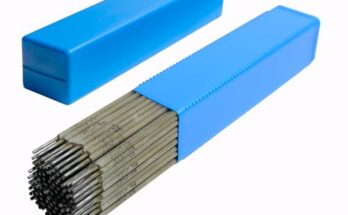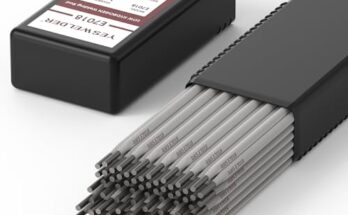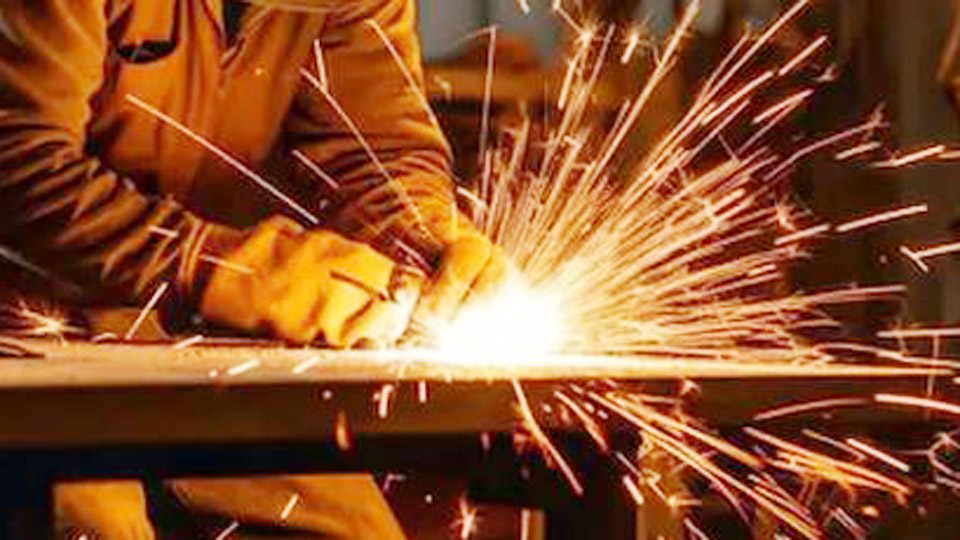When I first got into welding, one thing was made clear to me from day one — safety is everything. It’s not just about protecting yourself; it’s about being responsible for those around you too. Welding is a powerful trade, and with that power comes serious risks.
I’ve seen what can happen when someone cuts corners, and I’ve also learned what it takes to keep yourself safe while still getting the job done right.

Image by cpdonline
I’m going to walk you through the top 10 safety rules every welder should follow. These aren’t just checkboxes on a list — they’re real habits that can save your life.
I’ll explain each one with some real insight and personal tips, so whether you’re just starting out or have been welding for years, there’s something here for you. Let’s dive into the most important welding safety rules you need to know.
Always Wear Proper Personal Protective Equipment (PPE)
This is the most basic, but also the most essential rule. When you weld, you’re exposed to intense light, heat, sparks, and fumes. That’s not something to take lightly.
You’ll want to gear up with:
- A welding helmet with the right shade lens
- Flame-resistant gloves
- A welding jacket or apron (leather or fire-retardant material)
- Safety glasses (under your helmet)
- Steel-toe boots
- Ear protection (especially for loud environments)
Your helmet protects your eyes and face from arc flash — a painful condition that can feel like sand in your eyes. Trust me, you don’t want to experience that. Good gloves protect you from burns and electric shock. A proper jacket keeps sparks from burning holes in your clothes (and skin). And boots? Let’s just say hot slag in a sneaker is something you never forget.
Work in a Well-Ventilated Area
Welding produces hazardous fumes and gases, depending on the materials and processes you use. If you’re welding indoors without proper ventilation, you’re basically breathing in a toxic cocktail.
I always recommend using fume extractors, fans, or even local exhaust ventilation. If that’s not possible, make sure there’s open air flow and you’re not stuck in a tight, enclosed area. In some cases, a respirator is also necessary — especially when working with galvanized metals or in confined spaces.
Long-term exposure to welding fumes can lead to serious respiratory problems. It’s something many welders don’t think about until it’s too late. Protect your lungs now, and you’ll thank yourself later.
Inspect Equipment Before Every Use
I make it a habit to inspect my equipment before every session. That includes checking the welding machine, leads, ground clamps, and even the condition of my PPE.
Why? Because damaged cables or loose connections can lead to electric shock, poor weld quality, or equipment failure mid-job. Look for:
- Frayed cables
- Exposed wires
- Damaged connectors
- Leaking gas lines
Even a small issue can become dangerous fast. It only takes a few seconds to look things over, but that quick check can prevent accidents and save you a world of trouble.
Keep Flammable Materials Far Away
Welding sparks travel — and I mean far. They can fly up to 35 feet depending on your setup. And they’re hot enough to ignite flammable materials almost instantly.
Before I strike an arc, I always do a quick scan of my surroundings. If I see any:
- Paper, cardboard
- Rags soaked in oil
- Paint cans
- Gasoline containers
- Wood shavings or dust
I clear them out of the area. Better safe than sorry.
It’s also a good idea to keep a fire extinguisher nearby and know how to use it. Welding in a clean, fire-safe zone is one of the smartest things you can do.
Use Proper Grounding Techniques
I’ve seen a few people ignore this one, and it didn’t end well. Grounding is critical to protect you from electric shock and to ensure your welding machine operates safely.
Make sure your ground clamp is attached securely to clean metal — no rust, paint, or coatings. It should have a solid connection close to your workpiece. Poor grounding can cause erratic arc behavior and dangerous feedback loops.
Also, be careful not to stand on damp or wet surfaces while welding. That’s asking for trouble when electricity is involved.
Protect Others Around You
You’re not welding in a bubble. Whether you’re in a shared shop or outside, there may be others nearby — and they deserve to be safe too.
Use welding curtains or shields to protect others from arc flash. Arc rays can damage eyes even from a distance. I’ve had co-workers get “flashed” just from walking by without protection. It’s not fun.
Also, keep noise levels in check, warn others before you start welding, and never weld near people who aren’t wearing PPE. Safety is a group responsibility.
Never Weld in Confined Spaces Without Safety Precautions
Welding inside tanks, vessels, or any enclosed space is a different ball game. You’re dealing with limited ventilation, potential buildup of gases, and restricted movement.
Before I ever enter a confined space, I make sure of a few things:
- The area is tested for oxygen levels and hazardous gases
- There’s a proper ventilation setup or an air-supplied respirator
- Someone is outside keeping watch (called a “hole watch” or “attendant”)
- I have a safe way to exit quickly
It’s not about being paranoid — it’s about being prepared. Confined space welding is one of the most dangerous tasks in the trade, and it demands extra caution.
Avoid Contact with Live Electrical Parts
Welding machines operate at high voltage, and if you’re not careful, you could easily come into contact with a live circuit.
Never touch the electrode or metal parts of the electrode holder with your bare skin or wet gloves. Always make sure your welding machine is properly grounded and switched off when not in use.
One habit I’ve developed is double-checking all connections before turning anything on. I also keep my gloves dry and avoid leaning on my workpiece during welding.
Electric shock is silent and sudden. It doesn’t give you a warning. So, keeping this in mind at all times is crucial.
Follow Lockout/Tagout Procedures When Needed
If you’re working in an industrial setting, especially around other equipment, always follow proper lockout/tagout procedures. This means isolating machines from power sources before doing maintenance or repairs.
Even if it’s just a quick job, skipping this step can lead to accidental startup — and serious injury. I’ve seen it happen, and it’s not something you forget.
Take the extra minute to lock it out. Your fingers, your hands, and your life are worth more than shaving a few seconds off the clock.
Stay Focused and Never Rush a Job
One of the biggest safety tips I can give you is this — slow down. Welding is not something to rush. Mistakes happen when you’re distracted, tired, or trying to finish too fast.
Fatigue leads to poor judgment. Distractions lead to missed steps. And rushing leads to injuries.
I always make sure I’m mentally present before I start any welding task. If I’m not feeling 100%, I either take a break or wait until I’m ready. Welding takes precision and patience. Being in the right mindset makes all the difference in staying safe.
Top 10 Welding Safety Rules
| Safety Rule | Why It Matters |
|---|---|
| Wear proper PPE | Prevents burns, arc flash, and physical injury |
| Work in a ventilated area | Avoids toxic fume inhalation |
| Inspect equipment before use | Prevents equipment failure and electric shock |
| Keep flammable materials away | Reduces fire hazards |
| Use proper grounding | Ensures safe operation and arc stability |
| Protect others nearby | Prevents injury to bystanders |
| Follow confined space procedures | Avoids suffocation and entrapment |
| Avoid contact with live parts | Prevents electrical shock |
| Use lockout/tagout when necessary | Stops accidental machine startup |
| Don’t rush, stay focused | Reduces careless mistakes and injuries |
Conclusion
Welding is an incredibly rewarding trade, but it demands respect and responsibility. These top 10 safety rules aren’t just tips — they’re the foundation of every safe job I’ve ever done.
I’ve learned them through experience, sometimes the hard way. And I’ve seen how just one missed step can lead to serious consequences. That’s why I follow these rules every single time I pick up a torch or electrode.
If you’re new to welding, start building good habits now. If you’re experienced, it never hurts to revisit the basics. Safety isn’t something you master once — it’s something you practice every day.
At the end of the day, your health and well-being are worth more than any weld. Stay sharp, stay safe, and weld with care.
Frequently Asked Questions
What is the most important safety rule in welding?
Wearing proper PPE is the most important rule. It protects your eyes, skin, lungs, and body from dangerous elements like arc flash, burns, and fumes.
Why is ventilation important when welding?
Ventilation keeps toxic welding fumes from building up in your breathing space. Without it, you can suffer from respiratory issues or even pass out.
Can I weld in sneakers?
No, you should always wear steel-toe boots. Sparks and molten slag can burn right through sneakers, putting your feet at risk.
Is it okay to weld near others without a curtain?
No. Always use welding curtains or barriers to shield others from arc rays and flying sparks. Arc flash can injure bystanders even from a distance.
Should I wear ear protection while welding?
Yes, especially when working in noisy environments or using grinding tools nearby. Long-term noise exposure can damage your hearing.
How do I know if I’m in a confined space?
A confined space is any area with limited entry/exit and poor ventilation, like tanks, silos, or enclosed pits. If in doubt, treat it as one and follow safety procedures.
Is it dangerous to weld while tired?
Yes. Fatigue leads to slower reaction time and poor focus, increasing your chances of making dangerous mistakes.
Do I need to inspect my equipment every time?
Yes. Equipment can wear down or get damaged quickly. A daily inspection helps catch small issues before they become big problems.
What kind of respirator should I use for welding?
It depends on the material. For basic welding, a half-mask with P100 filters works well. For toxic metals or confined spaces, you might need an air-supplied respirator.
What happens if I don’t ground my work properly?
Improper grounding can lead to electric shock, machine malfunction, or inconsistent welding results. Always double-check your ground before striking an arc.







